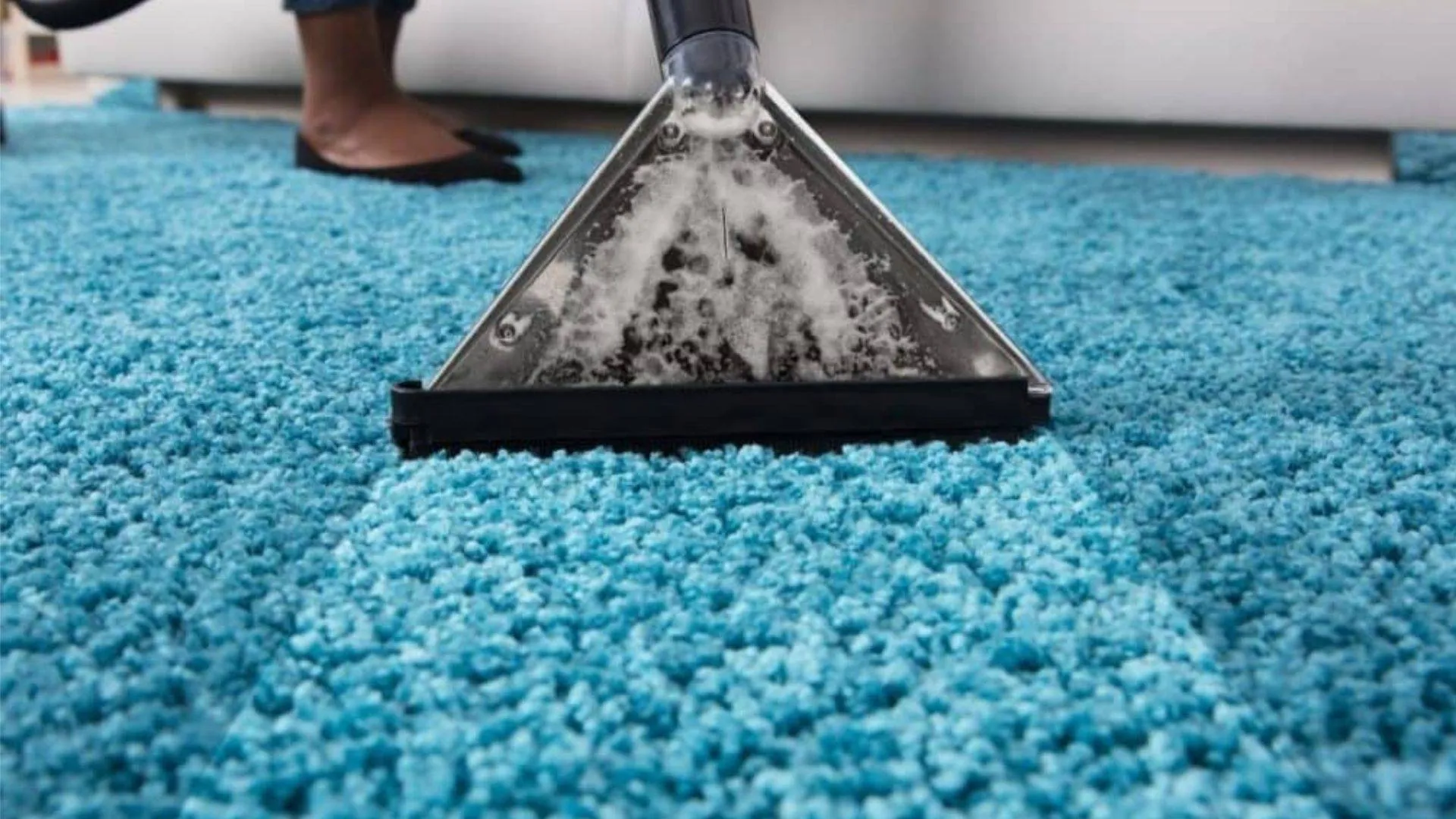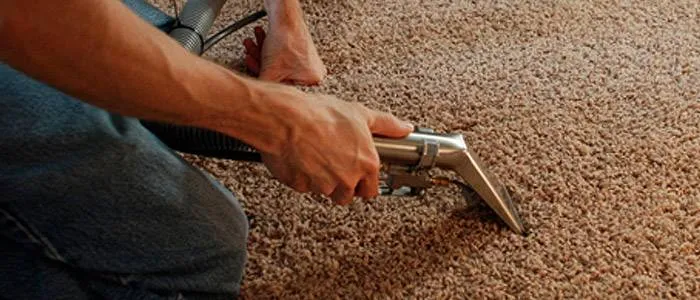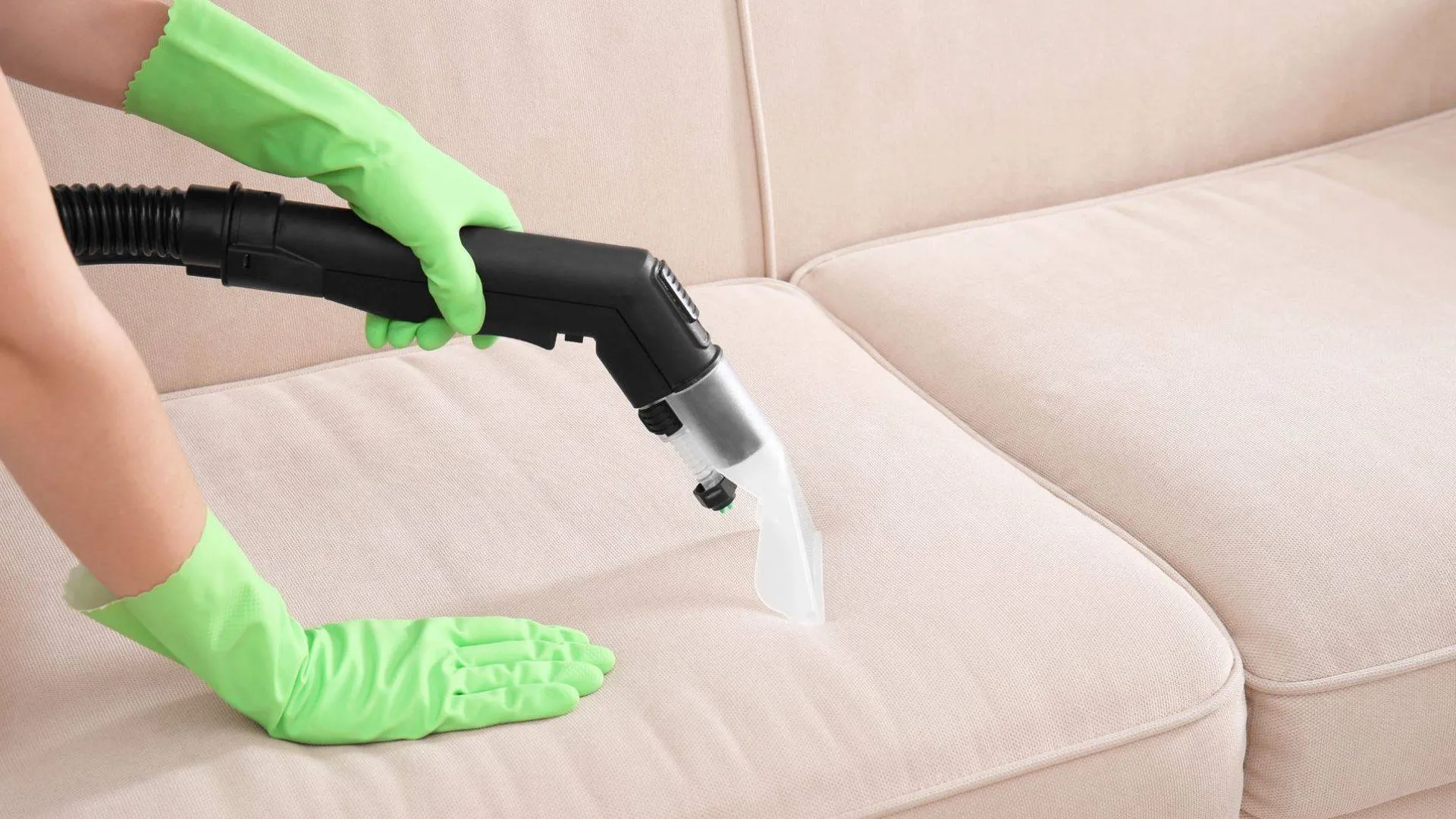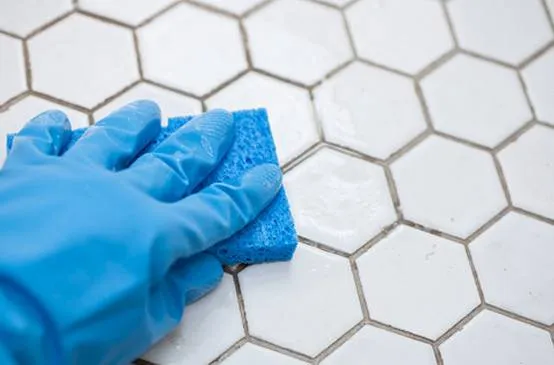How To Remove Carpet Stains Like A Pro
In pursuing pristine carpets that exude comfort and elegance, homeowners often encounter a formidable adversary: carpet stains. These unsightly blemishes can tarnish the beauty of even the most luxurious carpets. Whether it’s a stubborn wine spill, a mishap with your morning coffee, or persistent pet stains that need professional removal, our knowledge extends across every facet of the carpet cleaning domain.
Throughout this article, we will delve into the intricacies of carpet stain removal, equipping you with the essential tools, products, and DIY methods needed to restore your carpets to their former glory. Also, we’ll reveal strategies for preventing future stains and knowing precisely when to call in the professionals.
Your quest for immaculate carpets begins here, guided by the expertise of a trusted industry veteran.
Understanding Different Types Of Carpet Stains
Carpet stains are a diverse and challenging issue, each with its unique composition. To effectively tackle them, it’s crucial to comprehend the nature of the stain you’re facing.
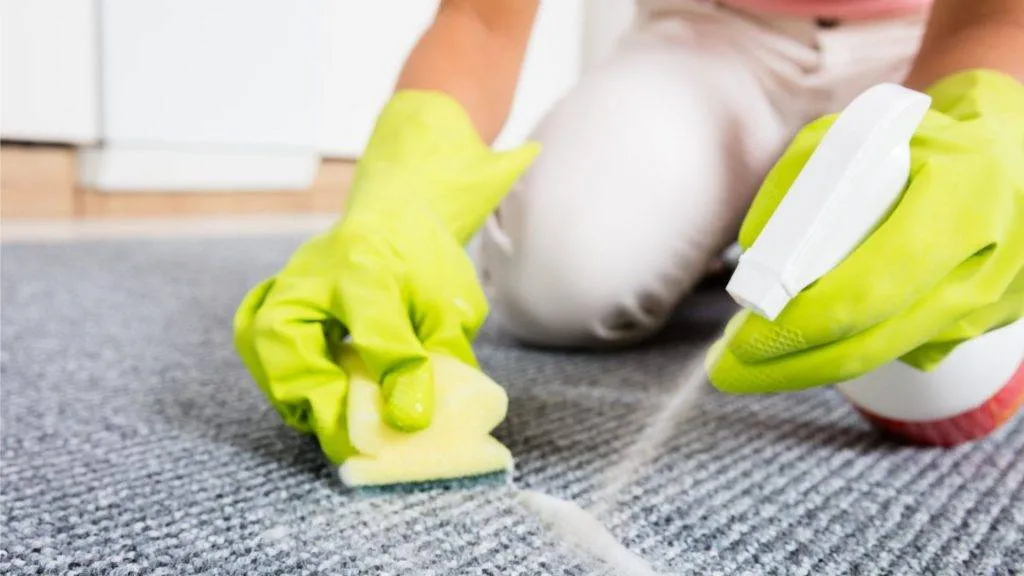
Carpet stains manifest in various forms, some being more common than others. These include food and beverage stains, pet stains, oil and grease stains, ink and dye stains, biological stains, and dirt and mud stains.
Understanding different types of stains is crucial for effective removal, as a one-size-fits-all solution may worsen the stain or harm the carpet fibres. Thus, identifying the stain’s nature is essential. Identifying the stain matters because it ensures successful removal and prevents potential carpet damage. Different stains react differently to cleaning agents and methods. Misdiagnosis can lead to more extensive and costly damage.
Essential Tools And Products For Effective Stain Removal
Effective stain removal relies on having the right tools and products available. To tackle various carpet stains effectively, you’ll need clean white cloths for blotting, mild dishwashing liquid for versatile cleaning, white vinegar to combat pet stains and odours, and hydrogen peroxide for tough stains like blood or wine**.** Ammonia can help with ink and dye stains, while baking soda aids in odour absorption and stain lifting.
Consider stain-specific cleaners for targeted solutions, a soft-bristle scrub brush for agitating the cleaning solution, and rubber gloves when handling chemicals. A wet/dry vacuum assists in removing excess moisture, and plastic bags or wraps are handy for isolating and protecting treated areas during drying.
These essentials equip you to tackle common household carpet stains effectively. Always follow manufacturer instructions and conduct a patch test to avoid unintended damage.
Step-by-Step DIY Carpet Stain Removal Methods
Here’s a step-by-step guide to DIY carpet stain removal methods that you can employ to address different types of stains effectively:
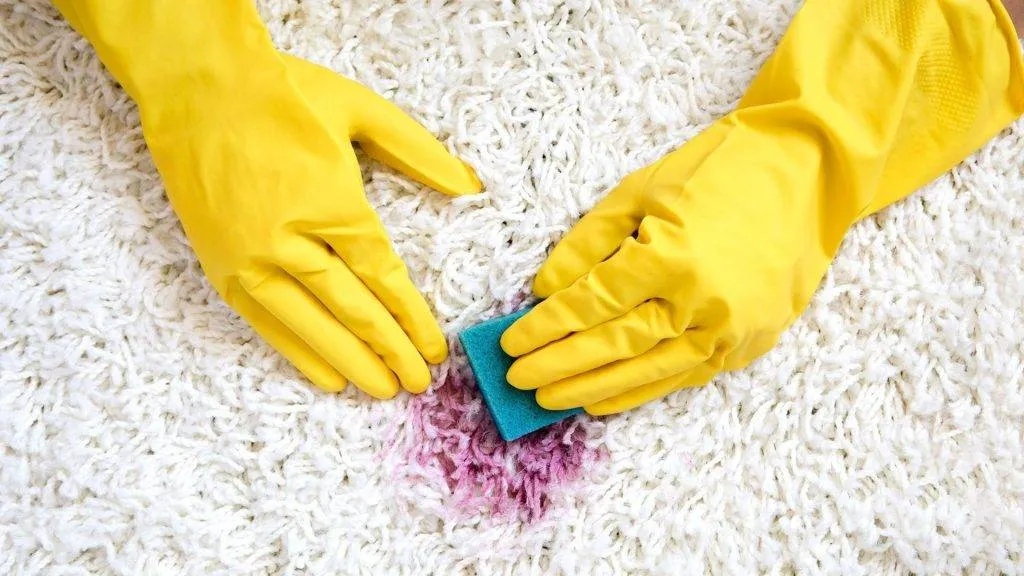
Step 1: Act Quickly
The sooner you begin the stain removal process, the better your chances of success. Prompt action prevents the stain from setting and becoming more challenging to remove.
Step 2: Blot, Don’t Rub
Use a clean white cloth to blot the stain gently. Avoid rubbing; this can push the stain deeper into the carpet fibres or spread it. Work from the outer edges of the stain toward the centre to prevent it from spreading.
Step 3: Prepare Your Stain-Removal Solution
Depending on the type of stain, mix a suitable cleaning solution.
- For general stains, a mixture of mild dishwashing liquid and water is a good starting point.
- For stubborn pet stains and odours, use a mixture of white vinegar and water.
- For tough stains like blood or wine, apply hydrogen peroxide with extreme caution.
- For ink and dye stains, consider a mixture of ammonia and water.
Step 4: Apply the Cleaning Solution
Dampen a clean cloth with the prepared cleaning solution and gently blot the stain. Avoid over-saturating the carpet, as excessive moisture can lead to mould or mildew growth.
Step 5: Blot and Repeat
Continue blotting the stain with the cleaning solution until the stain begins to lift. It may take several repetitions, so be patient and persistent.
Step 6: Rinse and Blot
After stain removal, rinse the affected area with clean water to remove any remaining cleaning solution—Blot with a clean, dry cloth to absorb excess moisture.
Step 7: Let it Dry
Allow the treated area to air dry. You can use a fan to speed up the drying process. Avoid walking on the damp carpet until completely dry to prevent re-soiling.
Step 8: Vacuum
Once the area is dry, vacuum the carpet to restore its texture and remove any residue.
Step 9: Monitor and Repeat if Necessary
Inspect the treated area once it’s fully dry. If the stain persists, repeat the process or use a commercial carpet cleaner formulated for that specific stain type.
Step 10: Prevent Future Stains
To minimise future stains, consider applying a carpet protection after cleaning. Regular maintenance and immediate cleaning of spills can also help keep your carpet looking its best.
When To Seek Professional Carpet Cleaning Services
While DIY methods can tackle many carpet stains, professional carpet cleaning services are essential in certain situations. Expert carpet cleaners can tackle persistent stains that resist DIY efforts or extensive stains covering a significant carpet area.
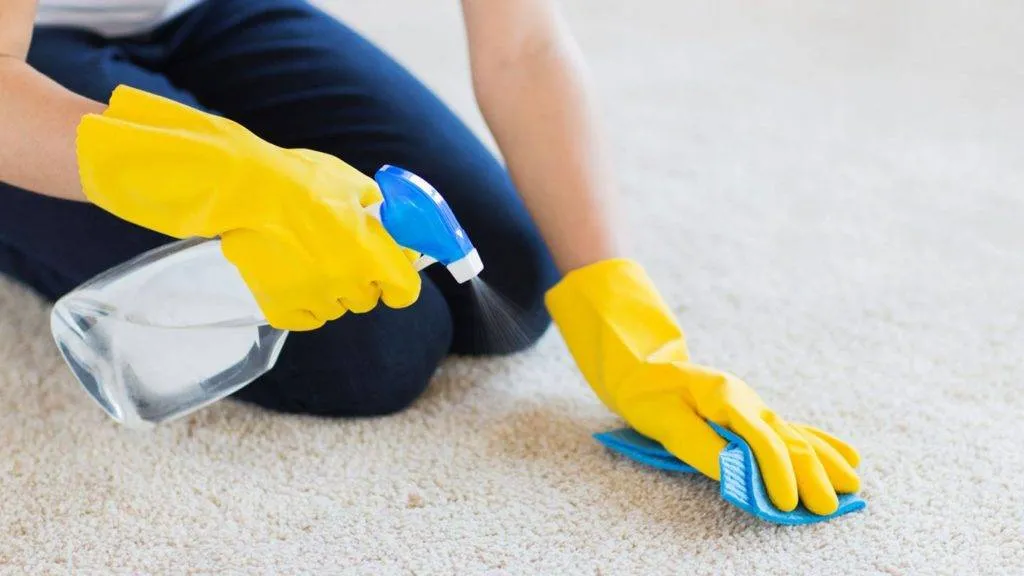
Delicate or valuable carpets require expert care to avoid damage. Lingering pet odours, mould, mildew, heavy soiling, and allergens often necessitate professional intervention. Antique or high-value carpets demand specialised handling to preserve their worth. Professional carpet cleaners effectively neutralise pet odours and address mould and mildew issues at their source.
Carpets in high-traffic areas benefit from professional carpet cleaning to extend their lifespan, while regular maintenance ensures overall cleanliness and hygiene. If allergies or respiratory issues are a concern, professionals can remove allergens and improve indoor air quality. Additionally, professional cleaning enhances visual appeal and creates a more inviting space before special events or when selling your home.
Professional carpet cleaners possess the expertise, equipment, and experience to handle various cleaning needs effectively. Regular professional cleaning, ideally at least once a year, maintains carpet longevity and contributes to a healthier indoor environment.
Maintain Stain-Free Carpets With Our Expertise
Maintaining stain-free carpets is manageable with the right knowledge, tools, and professional assistance when necessary. Understanding the nature of carpet stains and employing appropriate DIY stain removal methods is an essential first step. Remember to act promptly, blot instead of rub, and use the correct cleaning solutions tailored to your type of stain.
However, there are instances where the expertise of professional carpet cleaners becomes invaluable. They excel in handling persistent stains, large area treatments, delicate fabrics, valuable carpets, and issues like pet odours, mould, mildew, heavy soiling, and allergens. Their skills and equipment can rejuvenate carpets and extend their lifespan, ensuring a healthier and more inviting indoor environment.
By combining your proactive efforts with professional assistance, you can enjoy the benefits of clean, stain-free carpets throughout your home. Regular maintenance and timely intervention will help preserve the beauty and functionality of your carpets for years to come, creating a comfortable and visually pleasing living space for you and your family.
Here at The Carpet Surgeon Gold Coast, we’re your local experts in professional stain removal and comprehensive carpet cleaning. From stubborn wine stains to persistent pet odours, our experienced team can restore your carpets to their former glory. Book your professional carpet cleaning service online today and say goodbye to those troublesome stains!
